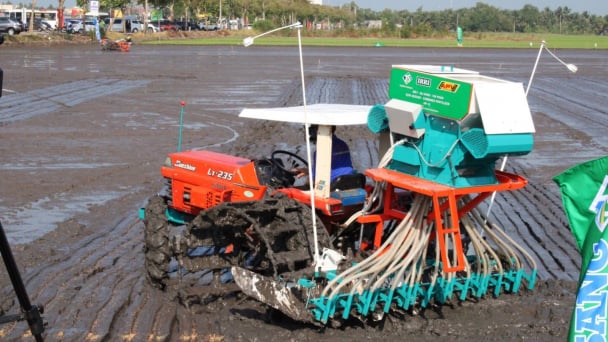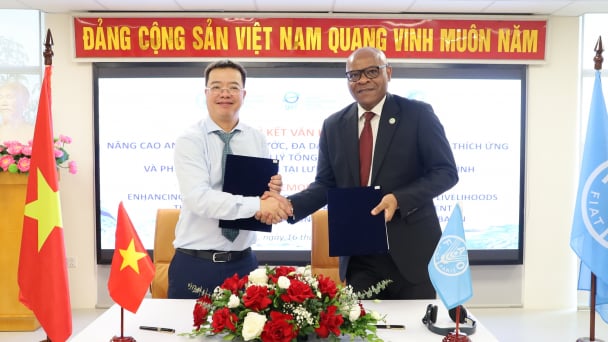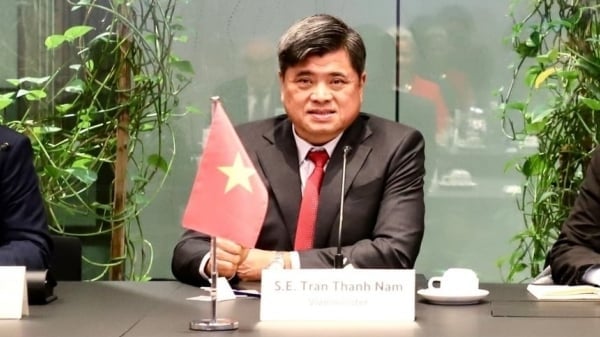May 21, 2025 | 04:42 GMT +7
May 21, 2025 | 04:42 GMT +7
Hotline: 0913.378.918
May 21, 2025 | 04:42 GMT +7
Hotline: 0913.378.918

A woman is harvesting rice in a field in Hanoi's outskirts.
“The export share of the top five major rice exporters – India, Thailand, Viet Nam, Pakistan, and the United States – is expected to fall from 74 percent to 70 percent. Changes in varieties and increased focus on cultivating higher quality strains will certainly help Viet Nam to reduce its dependence on China," OECD-FAO agriculture outlook said.
The projection has been unveiled in the annual agricultural outlook by the Organisation for Economic Cooperation and Development (OECD) — a group of rich countries — and the Food and Agriculture Organization of the United Nations (FAO).
Accordingly, the global cereal trade including wheat, maize and rice is expected to increase by 21% to 542 million tons by 2030.
“India, Viet Nam and Thailand will continue to lead global rice trade, but Cambodia and Myanmar are expected to play an increasingly important role in global rice exports,” OECD-FAO agriculture outlook said.
World trade in rice over the past ten years grew at 1.5 percent per year on average, experts said. The outlook expects global rice trade to increase by 2.6% or 16 million tons per year over the next ten years and reach 62 million tons by 2030, experts said.
In addition, Thailand is expected to continue to play a role as an important rice exporter although the country will face more competitions. The group of the five largest rice exporters will lose market shares to countries in the less developed countries in Asia, particularly Cambodia and Myanmar, as these countries become more competitive internationally", the outlook said.

Cambodia and Myanmar are expected to capture market share from the world's top rice exporters. Photo: Daily Sun.
The outlook expects rice shipments from less developed Asian countries to more than double from 4 million tons to 10 million tons by 2030. Large exportable supplies together with higher quality rice, especially the popularity of Indica rice variety, will allow these countries to capture a greater share of Asian and African markets.
"Demand for other rice varieties is expected to robust over the next ten years including Japonica rice", the outlook said. Experts said that despite their different market structures in terms of production zones, consumer preferences and policies, most agricultural models do not distinguish between the two varieties. However, in the medium and long term, climate change is expected to affect production of both varieties.
Projections using the latest Climate Change and Rice Economy model based on six scenarios showed that international Japonica rice prices would be “more volatile” than those for Indica rice.
The scope for model assessment includes major rice producers and consumers such as Thailand, Viet Nam, Indonesia, Malaysia, the Philippines, Cambodia, Laos, Myanmar, China, Japan, Korea, India, United States, the European Union (including the United Kingdom), Bangladesh, Sri Lanka, Nepal, Pakistan, Brazil, Côte d’Ivoire, Egypt, Madagascar and Nigeria.
Accordingly, two key scenarios of the model found that agriculture and innovation systems in Viet Nam and China “will play a significant role in stabilizing international rice prices in the mid-to long-term, as climate change is increasingly making impacts on rice production.”

(VAN) In 2024, over 295 million people across 53 countries and territories faced acute hunger—an increase of almost 14 million people compared to 2023, while the number of people facing catastrophic levels of hunger reached a record high.

(VAN) World Environment Day 2025 (June 5) carries the theme 'Beat Plastic Pollution' continuing to emphasize the global urgency of addressing the plastic waste crisis.

(VAN) This was the assessment shared by experts at the workshop titled 'Assessing the Role and Potential of Low-Emission Rice Production Systems in Vietnam,' held on the morning of May 19.

(VAN) Cai Rong Port is the fisheries control center of Quang Ninh, helping to monitor fishing vessels, combat IUU fishing, and remove the EC's 'yellow card'.

(VAN) The German Agricultural Society (DLG) explores the possibility of establishing a mechanization service center in Vietnam’s Mekong Delta to support farmers in accessing and utilizing advanced machinery.

(VAN) On May 16, the Department of Water Resources Management, in collaboration with the Food and Agriculture Organization of the United Nations (FAO), held a signing ceremony for the GEF-8 project document.

(VAN) Food safety, mechanization, vocational training, and market opening are key areas of cooperation expected between the Vietnamese Government and the Federal Republic of Germany.